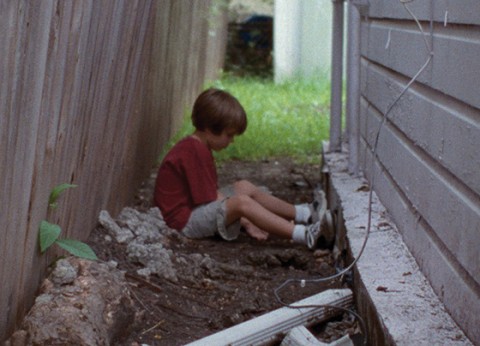Experiments in time

Even if you haven’t seen Boyhood, you’ve probably heard of it. Richard Linklater’s movie has received a lot of attention because of its unique structure: he filmed it by following his actors—the central one, a child—for a few days each year for 12 years. The premise is simple: a child grows up. The result is a startling realism.
The camera follows Mason (Ellar Coltrane) from ages six to 18 through all the graces and trials of a white, middle-class American life. Other films have dealt with coming of age, child-parent relationships, even with the passage of time. But no other film has taken the time—literally—to record time’s passage in every frame.
Read our latest issue or browse back issues.
In one scene Mason talks to his father about girls. His face is softened by the last traces of baby fat. In the next scene he strips off his shirt to reveal the lean, lanky outline of early adolescence. Whatever Linklater is saying about his characters is said in small, sometimes subtle transformations. We see how tenuous and yet unrelenting the process of growing up is. There are no big speeches or heavy-handed themes in the film—just the unfolding of a particular life in a particular body, a particular story. Linklater breaks new ground because he and his actors commit themselves to telling this story by writing the script as they go from year to year.
Linklater is no stranger to experiments in time. He made three films exploring the perils and mysteries of modern love—Before Sunrise, Before Sunset, and Before Midnight—over a period of nearly 20 years and used the same actors as the lovers in each film. When Céline (Julie Delpy) asks Jesse (Ethan Hawke) if he would still talk to her if he met her as a stranger on a train (as he did 18 years earlier), there is no Hollywood gloss on the screen. Anyone who has aged alongside another human cannot help feeling the accumulated weight of their life together, visible in their rounded bodies and lined faces.
These movies don’t feel like gimmicks; rather, they jar us with the reality of how seldom Hollywood entertainment captures all of human life. We know Hollywood fantasy—what real human life can compete with an actor or actress’s witty dialogue, perfect apartment, sculpted abs, and luxurious hair? But as we ride with the ebb and flow of Boyhood or remember Linklater’s earlier work, we begin to suspect that the real missing ingredient in most flimsy TV dramas and romances is time.
When theologians describe the human person in relationship to God, one of the first characteristics that must be named is finite. We are time-bound creatures. Time—its passing and our eventual end—is our natural habitat, the condition that makes possible everything else that we know to be true about human experience. The delight and power of Boyhood is not the perimeters of its story as much as the immersion into it: every story is a story about time.
It’s unfair to imagine that all directors will begin filming their movies in real time, but there may be other places to experience this time-full truth in popular media consumption. As a parent of two young children, I often choose TV for entertainment because I can enjoy it in short snatches. But like many others these days, I often binge-watch episode after episode of one drama on DVD or streaming services. Sometimes I even save up episodes for several weeks so that I can indulge. When I do this, I’m hoping to “get lost” in the passage of time.
There are a few shows that I watch weekly, and there an experiment in time is unfolding as well. When Mad Men returned for the first half of its final season in mid-April, I settled into its fictional world like the embrace of an old friend. I moved to New York, had a baby, finished graduate school, and started a job—all in parallel to the lives of Mad Men characters. I could trace the seasons of my life in Don Draper’s aging face. When a season ends I take comfort in knowing that there’s more to come (for now).
On one hand, I don’t want to put too much moral weight on the timing of a TV schedule. On the other hand, the content of what we watch is only one part of the story. The power of the visual story medium is its ability to take us out of time—think of the two-hour hiatus from everyday life in a movie theater—and to give time back to us afterward. It’s worth reflecting on how we watch, as well as what we watch. For me, that might mean that time-full viewing could be a spiritual discipline—or at least a greater awareness of my finitude in the stories that accompany me.






